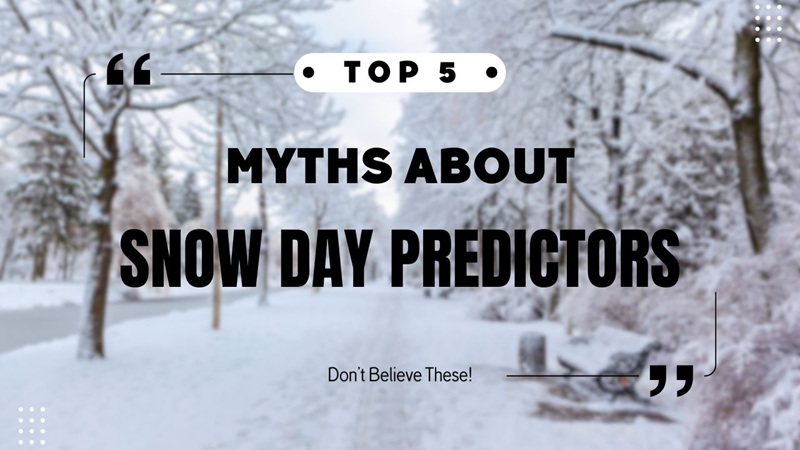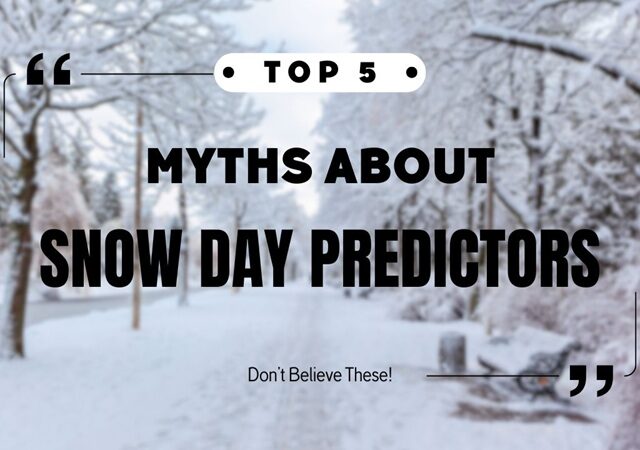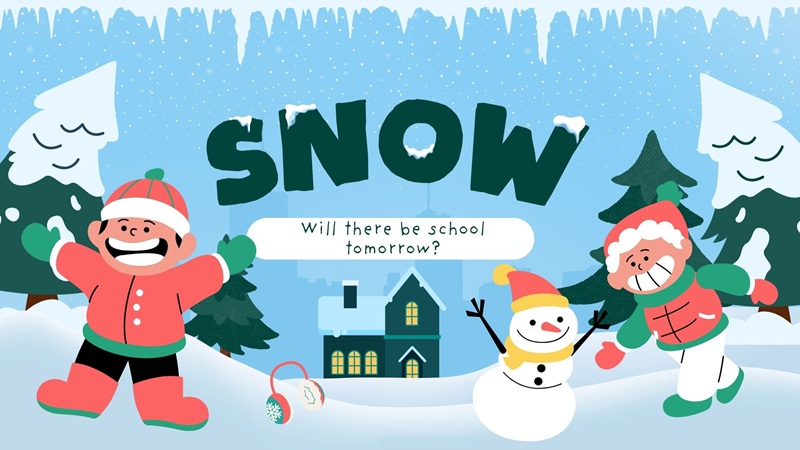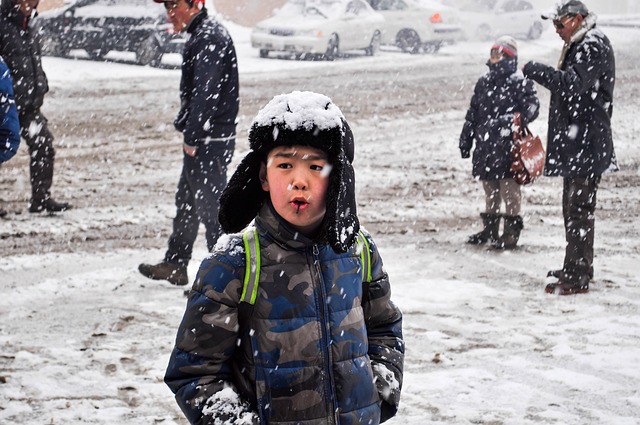You wake up, check your phone, and see snowflakes swirling outside. The question hits instantly: “Could today be a snow day?” That’s where a snow day prediction tool comes in. An online lifesaver that calculates the odds of your school being closed.
But can these tools really predict what your principal will decide? Or are they just a fun winter gimmick? The truth lies somewhere in between.
In this article, we’ll uncover the five biggest myths about snow day prediction tools, how they work, and why they’ve become a favorite among students, parents, and even teachers during snow season.
Myth 1: Snow Day Prediction Tools Can Guarantee School Closures
One of the biggest misconceptions about any snow day prediction tool is that it can predict whether your school will close with 100% accuracy. In reality, these tools don’t make official closure decisions: they simply analyze weather data and historical trends to estimate the likelihood.
School closure decisions are made by local administrators, who consider road conditions, bus safety, and communication with local authorities. A snow day predictor might show a “90% chance,” but that doesn’t mean the district will close. It’s a forecast; not a promise.
Still, these tools are useful for giving you an early heads-up, so you can plan accordingly. Think of them as your personal weather assistant, not your principal.
Myth 2: All Snow Day Prediction Tools Use the Same Algorithm
Not all snow day prediction tools are built the same way. While many depend on generic forecasts or outdated models, advanced systems use real-time weather data from trusted sources such as OpenWeatherMap — enhanced by smart algorithms that factor in temperature drops, snowfall intensity, timing, and local school district behaviors.
For example, if your area’s schools tend to close early when heavy snow hits overnight, a well-designed snow day calculator adjusts its model to reflect those real-world patterns. This combination of reliable data and intelligent modeling ensures that your snow day predictor delivers accurate, localized results — not just generic estimates.
When evaluating any snow day prediction tool, look for one that’s transparent about its data sources and how it processes them. A blend of verified weather data and adaptive logic is what truly sets reliable tools apart.
Myth 3: They’re Just for Fun and Not Based on Real Data
It’s easy to assume a snow day predictor is just an online toy — a nostalgic throwback to those early 2010s “snowdaycalculator” sites. But modern snow day tools are surprisingly data-driven.
Many of today’s versions combine meteorological data with machine learning techniques. They analyze patterns such as:
- Snowfall rates in the past 24 hours
- Forecasted accumulation levels
- Historical closure behavior in nearby schools
- Temperature trends during morning commute hours
This combination allows them to make predictions that are far more accurate than random guesses. While they aren’t official, they often align closely with actual school decisions: especially when the weather is severe.
Myth 4: They Only Work in Areas with Heavy Snowfall
Another common misconception is that snow day prediction tools are only useful in northern states or regions with frequent blizzards. That’s not true.
Even in areas where snow is rare, these tools can still analyze weather forecasts and issue predictions when temperatures drop below freezing or when ice storms are likely.
In fact, the most advanced snow day predictors can estimate cold days: times when schools may close not because of snow, but because of dangerously low temperatures. This makes them helpful even for midwestern or southern states that experience occasional winter disruptions.
Myth 5: A High Probability Always Means a Snow Day
Let’s say your favorite snow day prediction tool shows a “95% chance” of closure. That doesn’t guarantee a day off.
Many factors beyond weather data influence the final decision: including school bus contracts, district policies, and even state mandates for minimum school days. Sometimes, a district will delay opening instead of closing altogether.
On the flip side, there are times when schools close unexpectedly even if the calculator showed a low probability. Predictive tools provide probabilities, not certainties.
To get the most out of them, always compare the prediction with your local weather forecast, road conditions, and official school alerts.
How Snow Day Prediction Tools Actually Work

At their core, snow day prediction tools are a mix of meteorology and data science. They gather live data from multiple weather APIs, analyze it using pre-trained models, and generate a “chance of snow day” percentage for your area.
Here’s a simplified breakdown of the process:
- Data Collection: The tool pulls temperature, wind, snowfall, and humidity data from trusted weather APIs.
- Historical Matching: It compares this data to previous years’ school closures in your region.
- Statistical Modeling: Using predictive algorithms, it estimates how similar conditions previously affected school operations.
- Probability Output: You receive an easy-to-read “snow day chance” percentage: for example, 70% chance of a snow day tomorrow.
By combining live forecasts with past outcomes, these tools provide a useful guide to what might happen. Though the final decision always rests with the school district.
Why You Should Use a Snow Day Prediction Tool Responsibly
A snow day prediction tool can save you the suspense of waiting for that 6 a.m. phone call. But it’s best used as a companion to official weather and school updates, not a replacement.
Use it to:
- Plan your morning commute in advance
- Prepare children for possible schedule changes
- Stay alert for sudden weather updates
Avoid using it as a definitive source: even the best algorithm can’t account for human decisions made by district officials.
Final Thoughts
Snow day prediction tools have evolved from simple novelty websites into genuinely insightful data-driven resources. They can’t control the weather or make your superintendent cancel classes: but they do provide realistic, probability-based forecasts that help families plan ahead.
By understanding what these tools can and cannot do, you’ll know how to use them wisely and interpret their results with confidence.
So next time you’re wondering, “Will there be a snow day tomorrow?” Go ahead and check your favorite snow day prediction tool. Just remember: it’s predicting the weather, not your fate.






Leave a Reply